The European Commission and the Fundació Mies van der Rohe announce today the first list of 449 works (completed between October 2018 and October 2020) competing for the 2022 European Union Prize for Contemporary Architecture – Mies van der Rohe Award. These works will be joined in September with a new group of nominees finished between November 2020 and April 2021.
-text by the authors
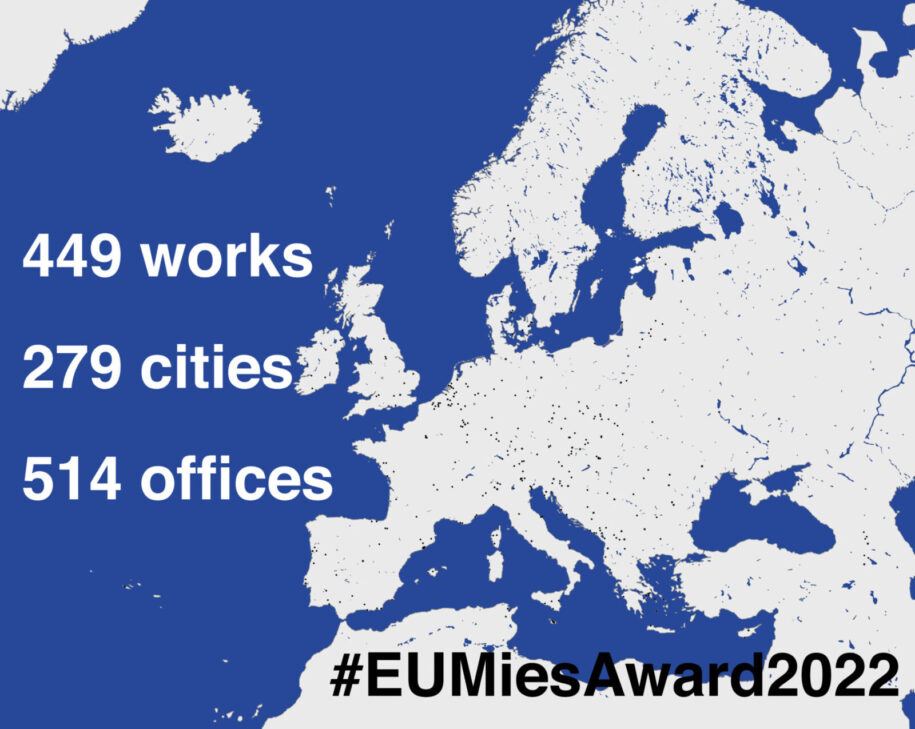
➝ 449 works from 279 cities in 41 countries have been nominated by European independent experts, the national architecture associations and the Prize AdvisoryCommittee.
➝ For the first time, the EU Mies Award counts with works from Armenia, Moldova and Tunisia.
As a result of the international concern about the spread of the coronavirus, the EU Mies Award has adapted this edition’s calendar in order to include all the works and to ensure the safety, rigor and excellence of the evaluation of all the projects.
The new cycle of the European Union Prize for Contemporary Architecture – Mies van der Rohe Award will reflect on the current challenges that architects, clients, policy makers and other professionals are faced with. Some of these works have been finished during the Covid-19 pandemic and some are the result of commissions from the 2007-2012 financial crisis or shortly afterwards. They will be evaluated during the post-pandemic time in a clear attempt to continue visiting architecture and its users, neighbours, clients and designers face to face. Climate change, pollution, digitalization and demographic explosion are also, maybe more than ever, a global threat that endangers the planet, its limited natural resources and in consequence our wellbeing. Buildings and infrastructures are responsible for at least 40% of all greenhouse gas emissions so the EU Mies Award must support the rethinking and replanning of Europe in such a way that it prioritises the environment through a cultural project in which design and sustainability are indissociable.
“The EU Mies Award as the resulting work of a strong network of Europeans, shows that quality can be understood in many different ways but that it must always be connected to the present challenges with the environment and make cities and infrastructure more sustainable and resilient”, says Anna Ramos Director Fundació Mies van der Rohe.
“By creating a bridge between the world of science and technology and the world of art and culture, the New European Bauhaus is an opportunity to make the Green Deal tangible and closer to citizens. The EU Mies Award has been and will continue to be a crucial European instrument to make this cultural change happen”, says Hughes Becquart Culture Policy Officer, European Commission.
“I am aware that I have committed myself to something that is strategically naïve, where we have found little political aspiration, but how can you gain a perspective on housing and city issues, if you do not immerse yourself in the vast legacy we have to build on? I remain an enlightened pessimist, even though”, says Frédéric Druot EU Mies Award 2019 Winner with Anne Lacaton, Jean-Philippe Vassal and Christophe Hutin: Grand Parc Bordeaux.
The EUMiesAward2022 nominees from Greece
Voronoi’s Corrals in Milos island, Greece by DECA architecture | Photography ©Yorgis Yerolymbos
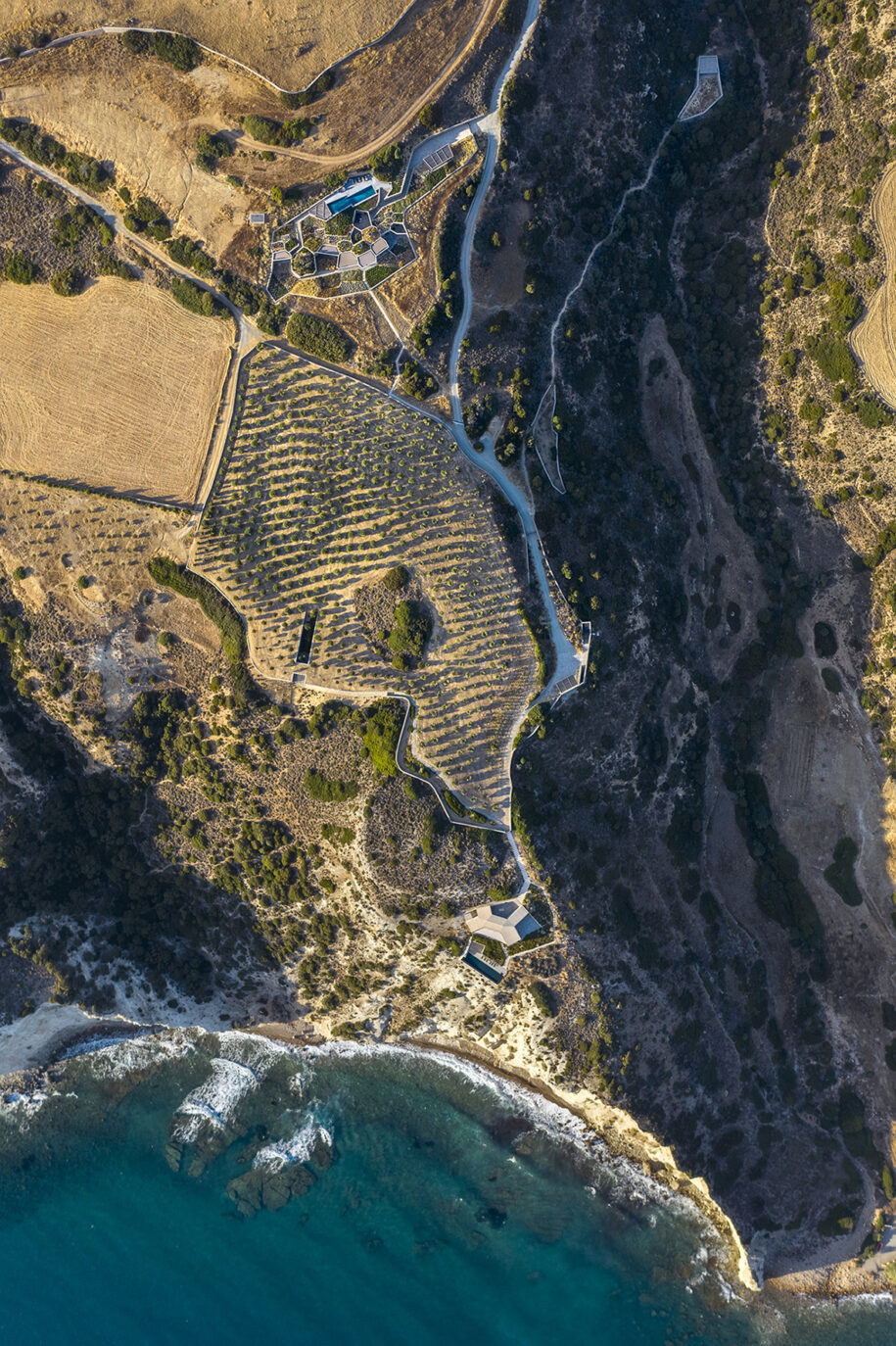
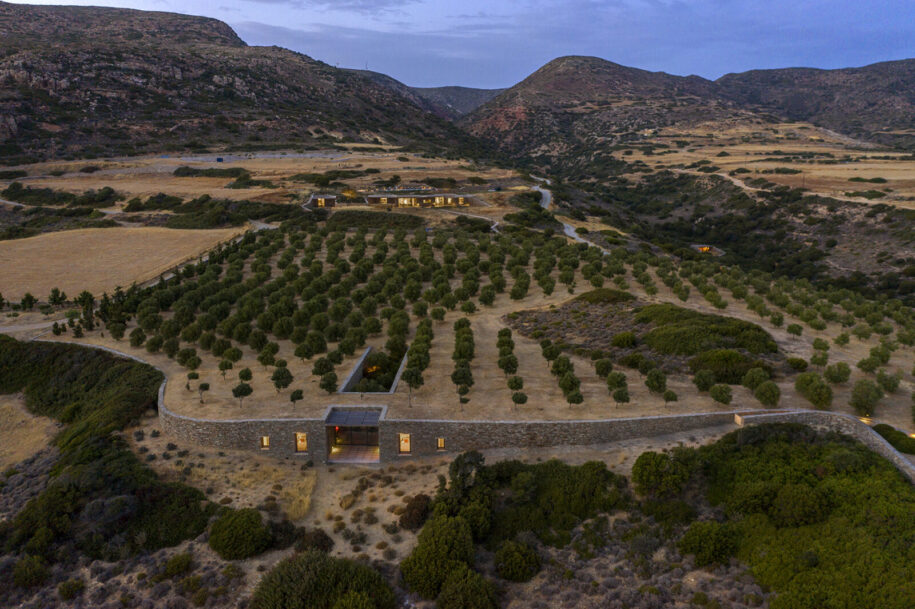
Dexamenes Seaside Hotel in Kourouta, Peloponnese, Greece by Κ-Studio | Photography ©ClausBrechenmacherReinerBaumann
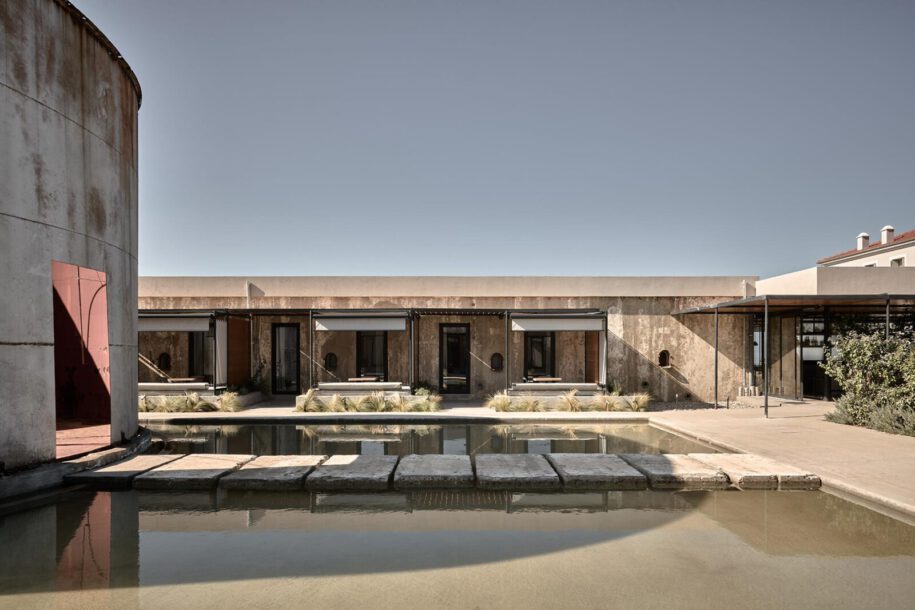
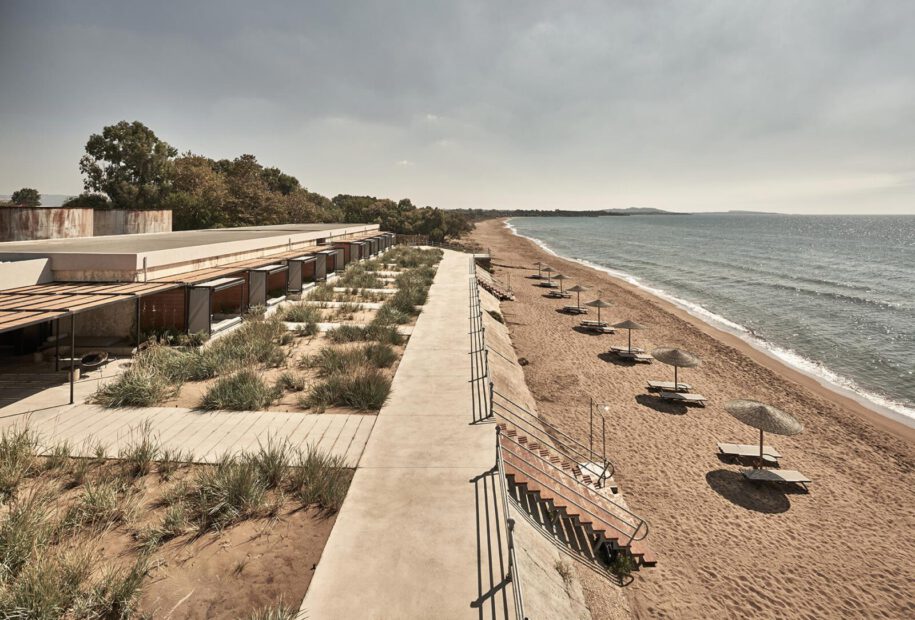
Parallel House in Kea island, Greece by en-route architecture | Photography ©Yiorgis Yerolymbos
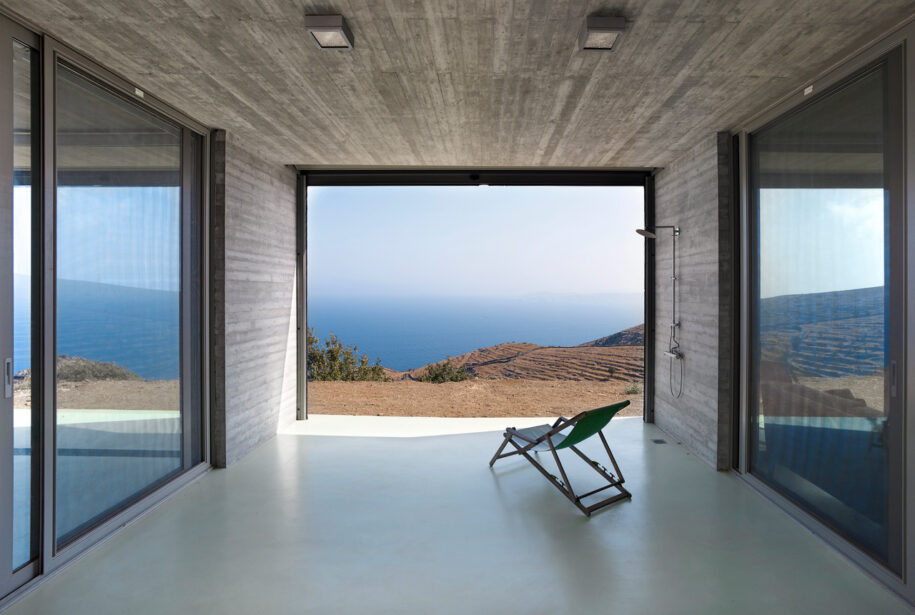
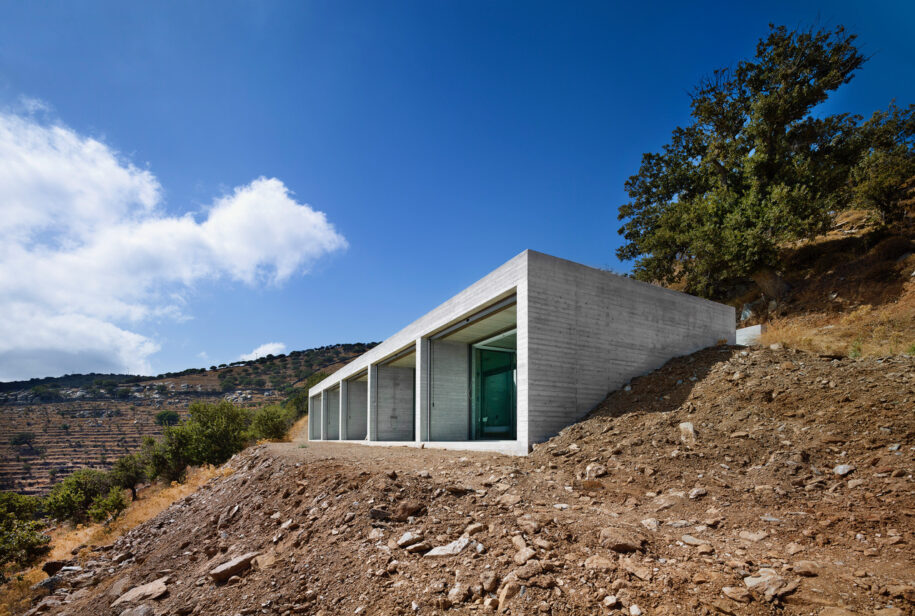
Pagkrati Apartment Building in Athens, Greece by Dimitris Issaias & Tassis Papaioannou | Photography ©Yiorgis Yerolymbos
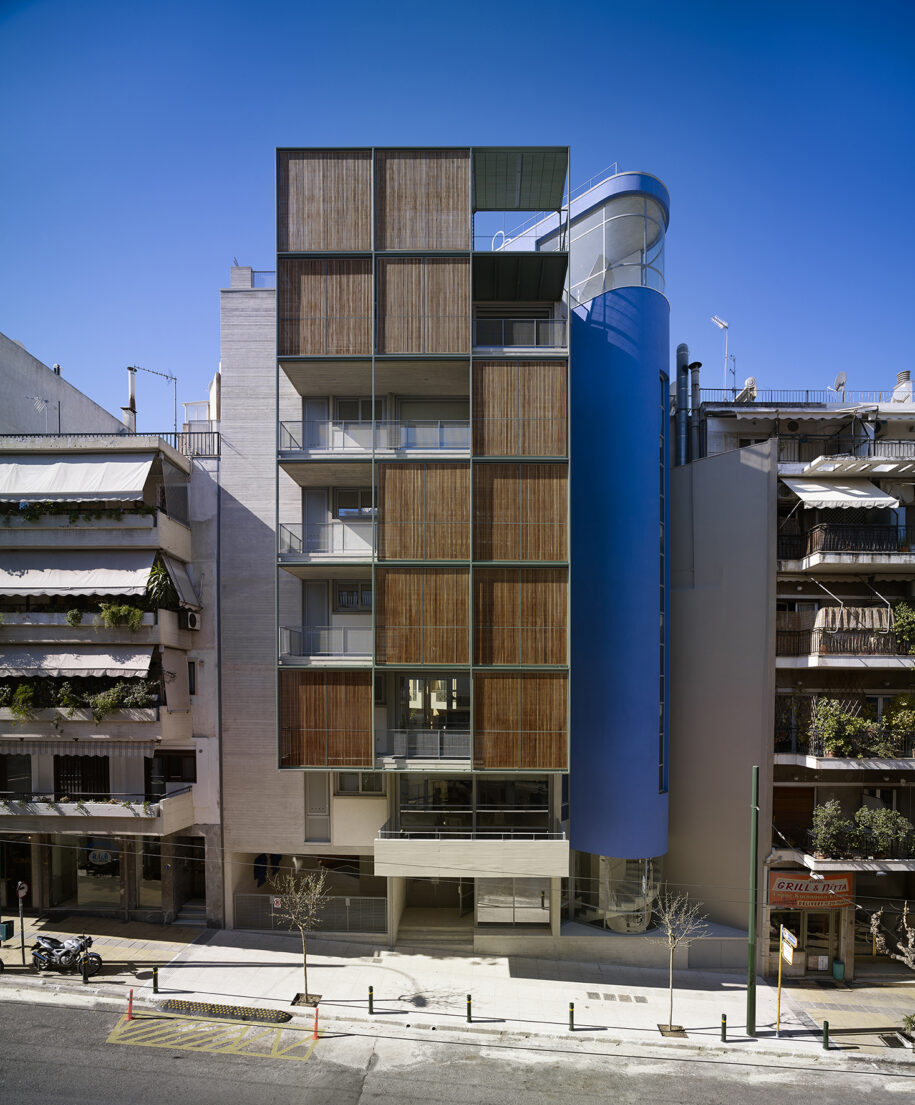
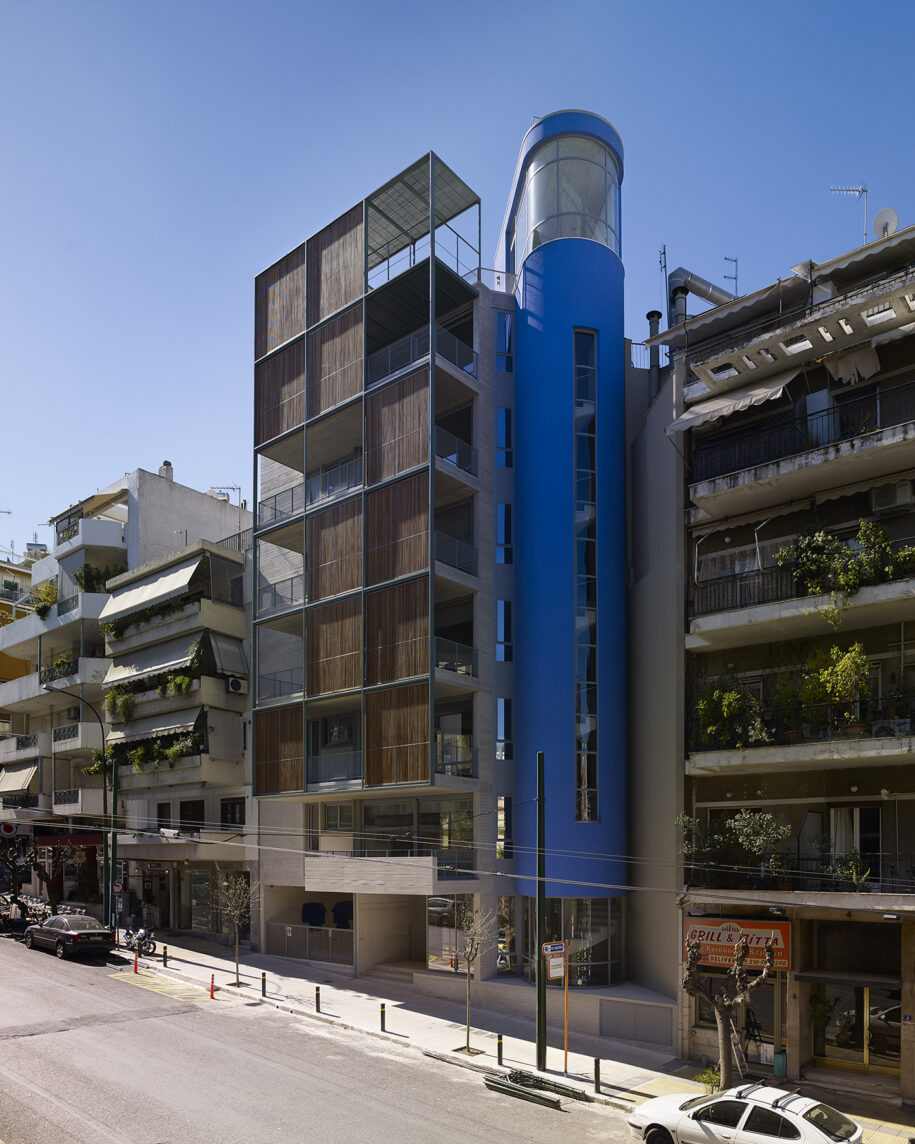
Athens International Airport ‘Eleftherios Venizelos’ – South Wing Expansion Project in Attica, Greece by Alexandros N. Tombazis & Associates Architects, AVW Architecture | Photography ©Yiorgis Yerolymbos
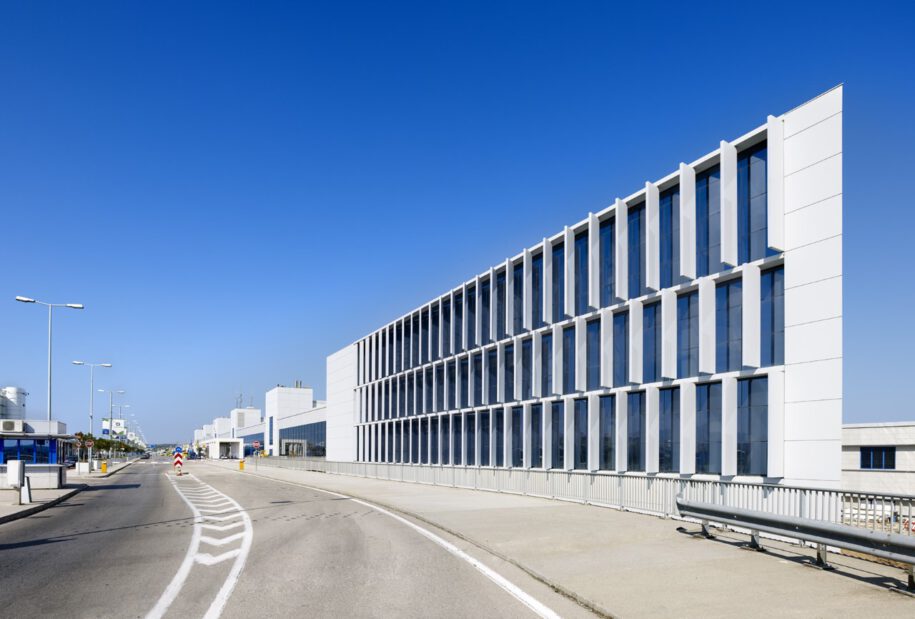
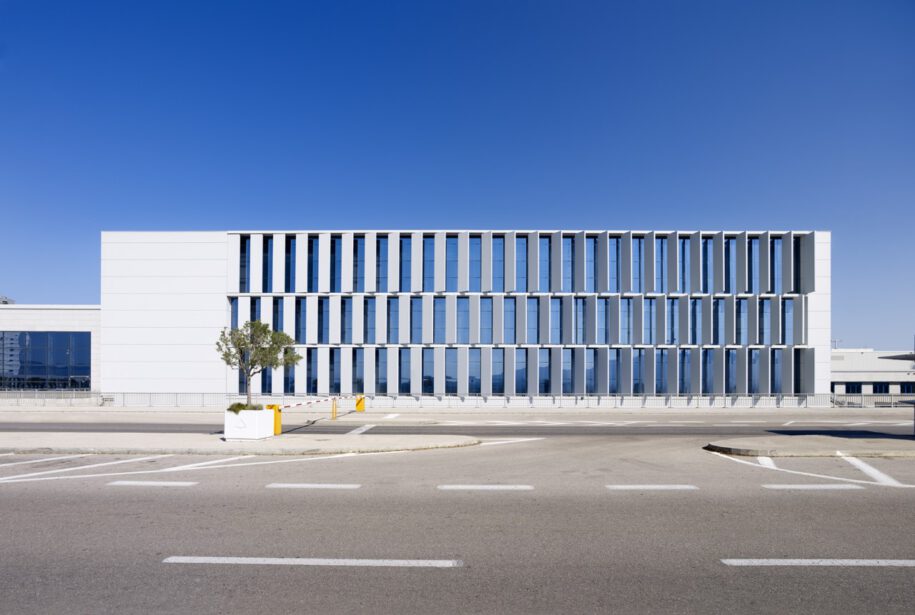
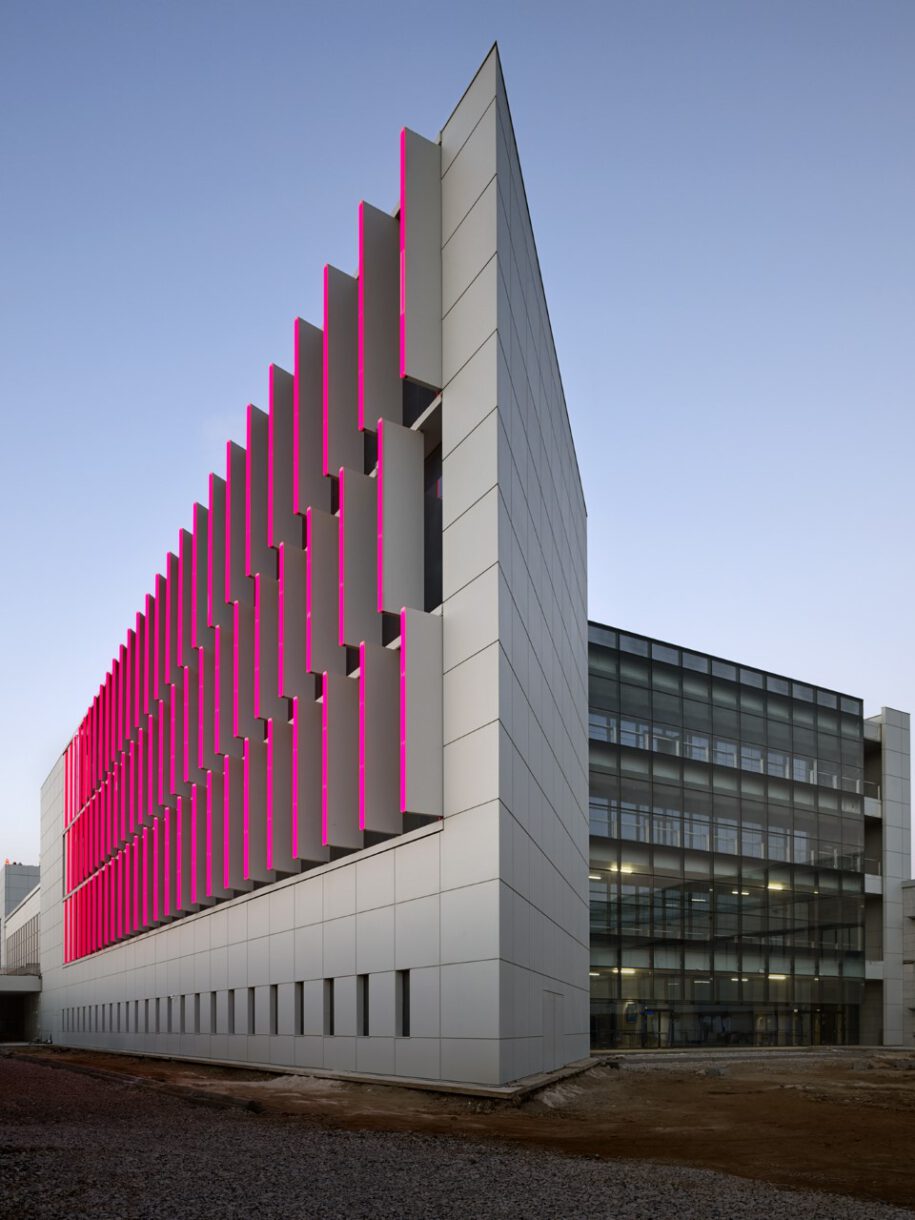
Library of the School of Philosophy, National Kapodistrian University of Athens in University Campus Zografou, Athens by Antonis Noukakis & Partners, Theano Fotiou Architect | Photography ©Yorgis Noukakis
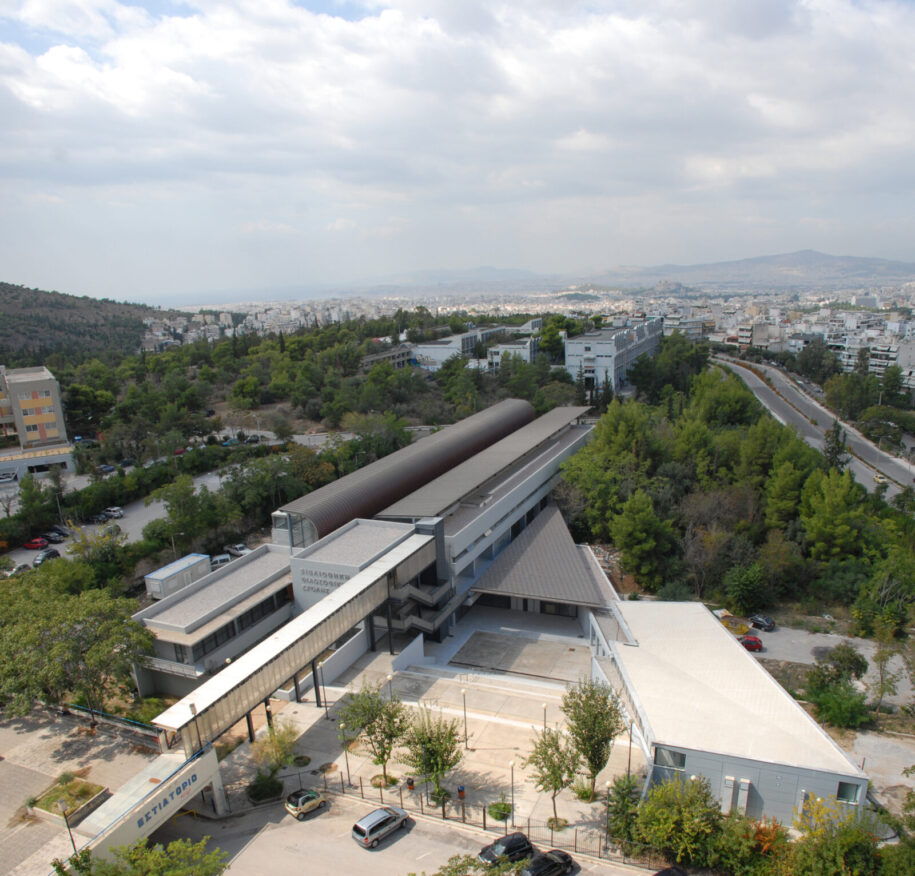
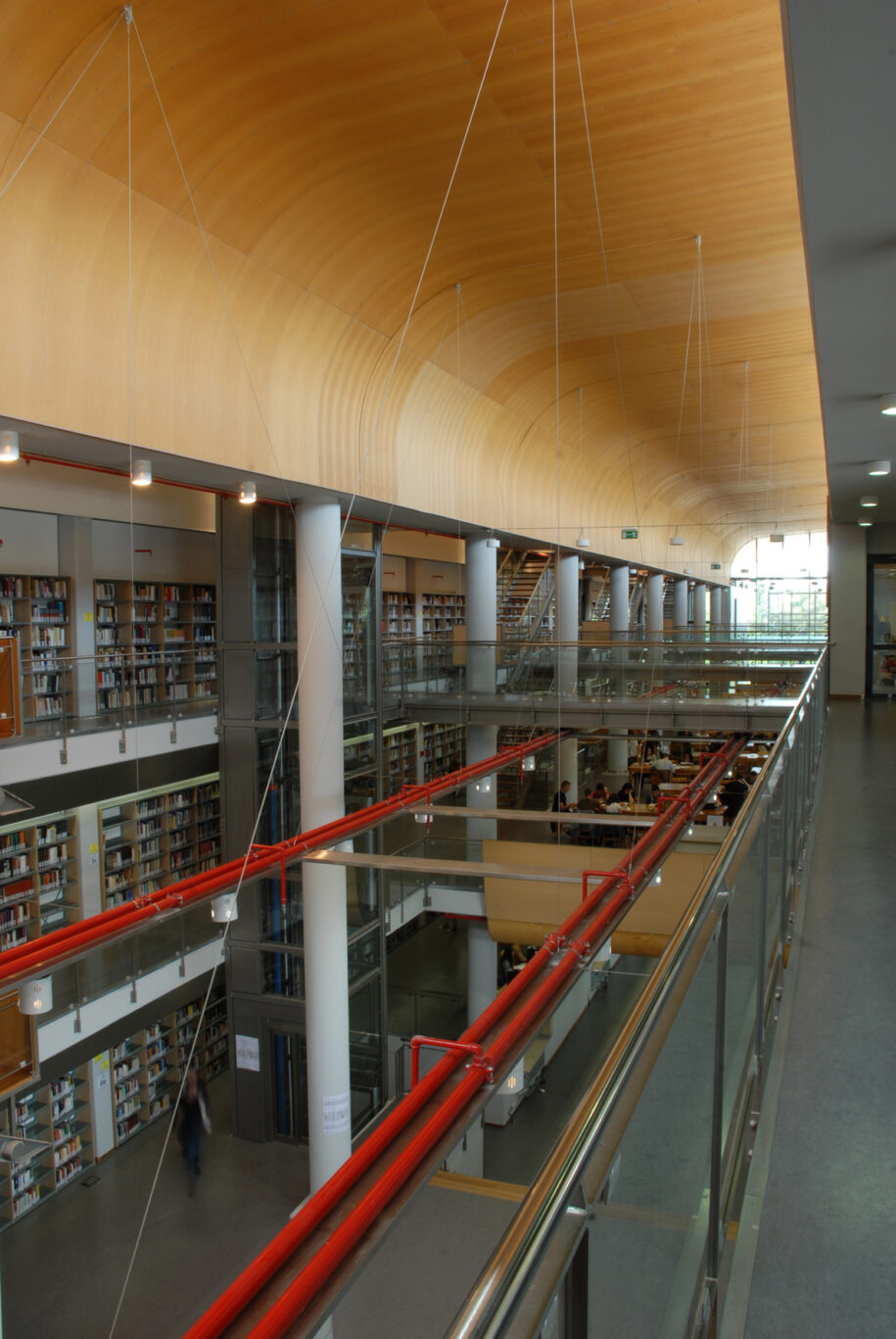
Residence in Livadia, Chania, Crete island, Greece by PALY Architects | Photography ©George Anastasakis
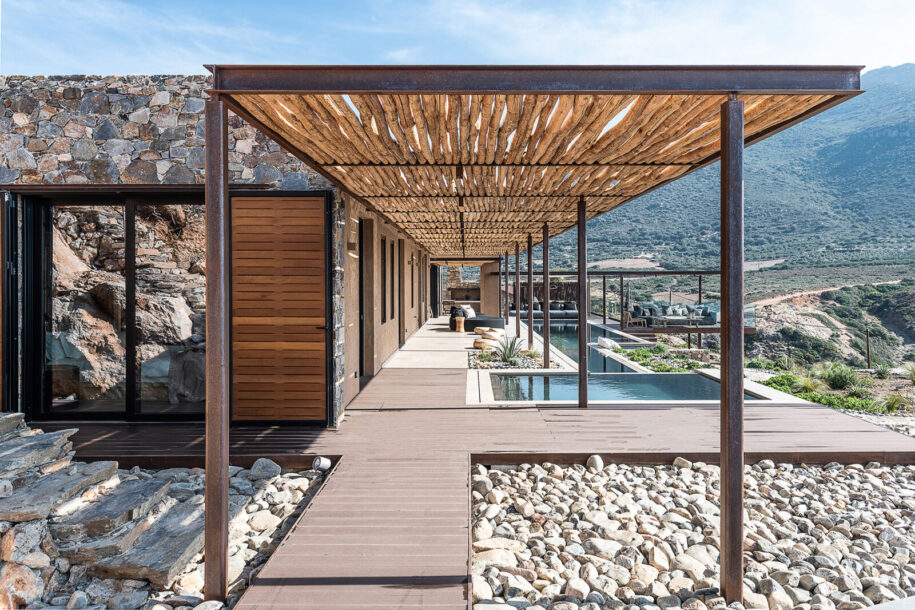
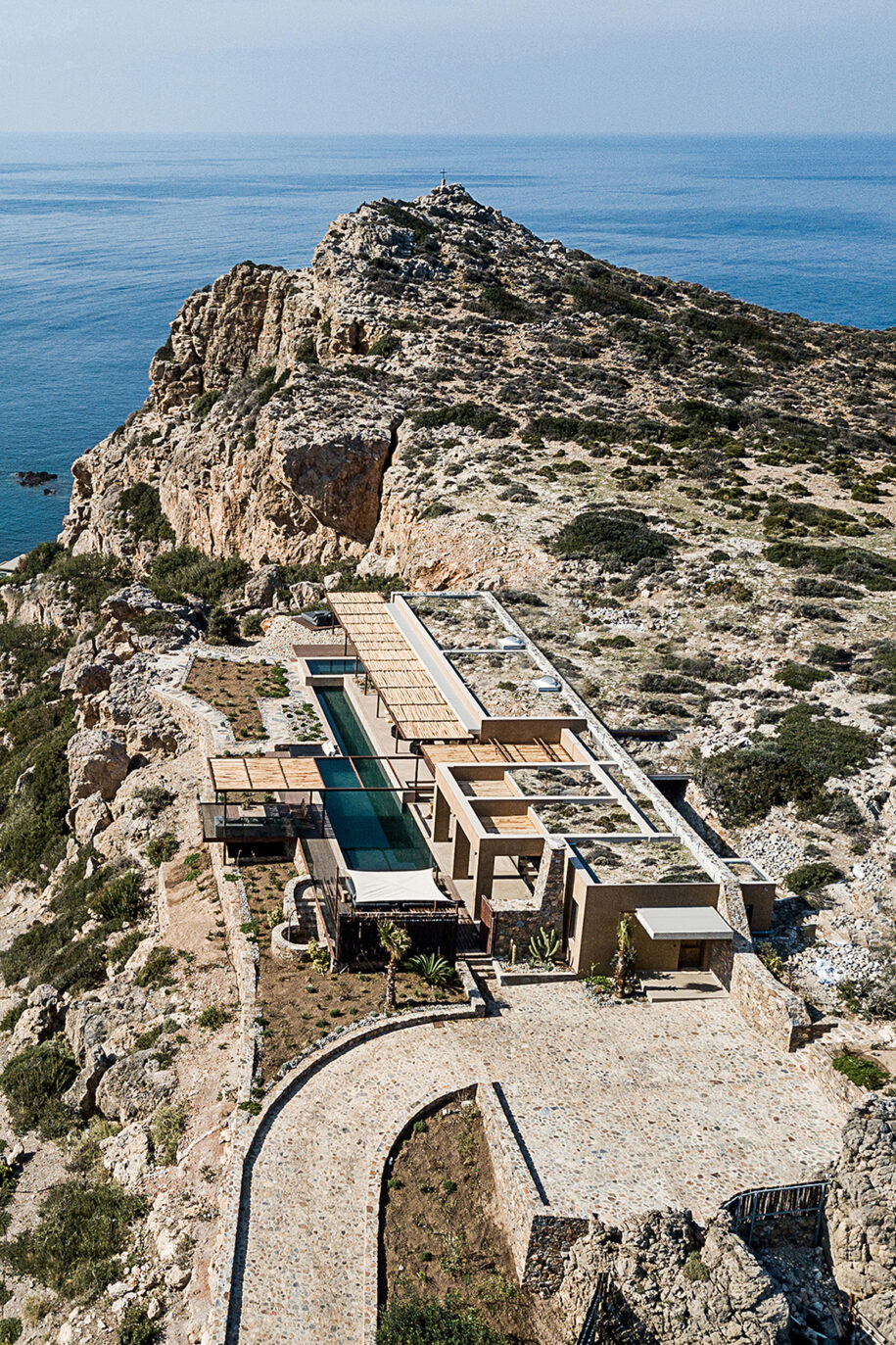
Private House in Kratigos, Lesvos, Mytilene island, Greece by b-group | Photography by ©Panagiotis Voumvakis
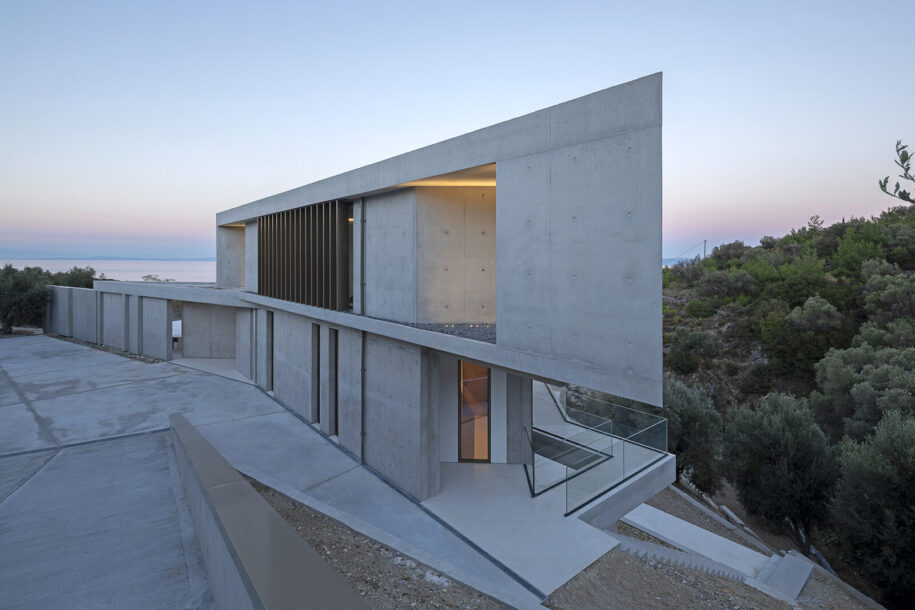
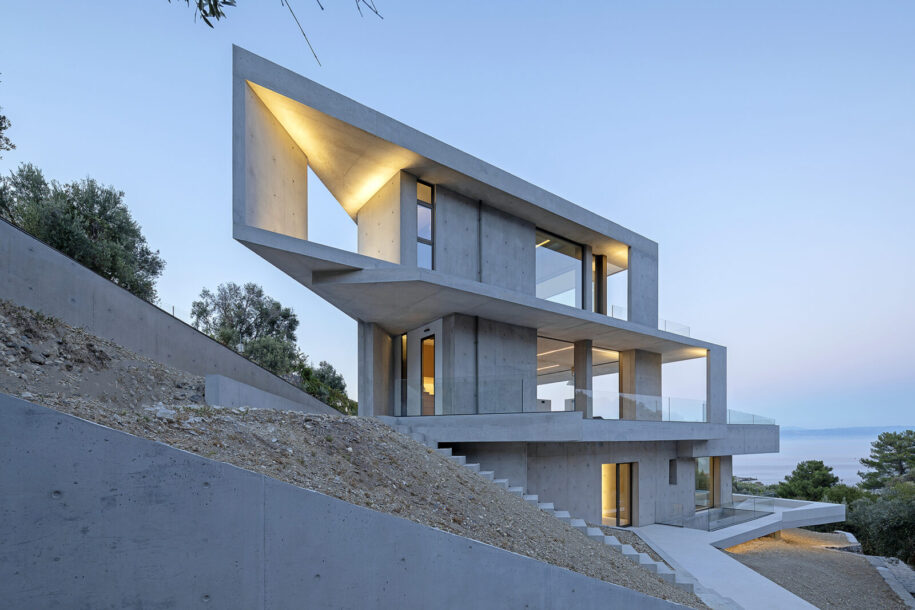
Museum of Contemporary Art, Basil and Elise Goulandris Foundation in Athens, Greece by Vikelas Architects | Photography ©Alexis Vikelas
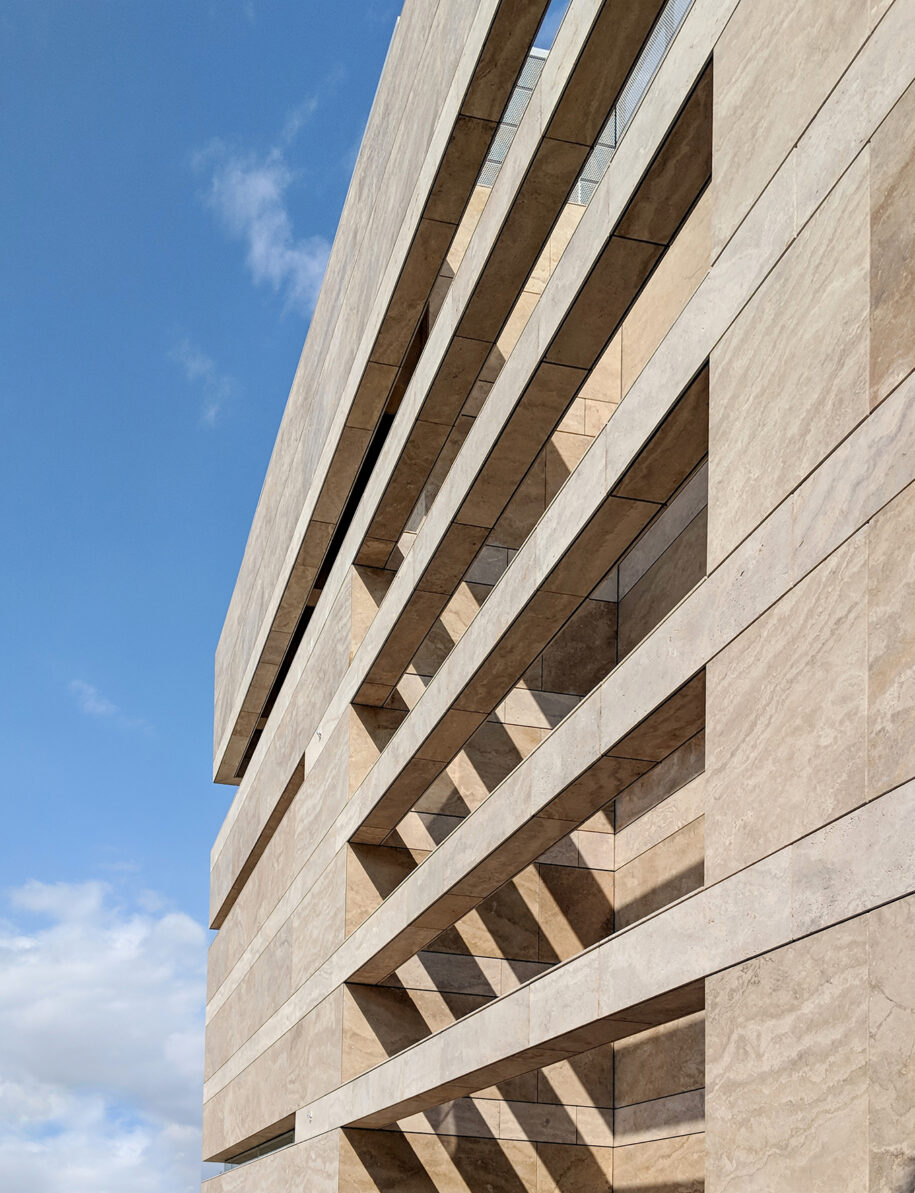
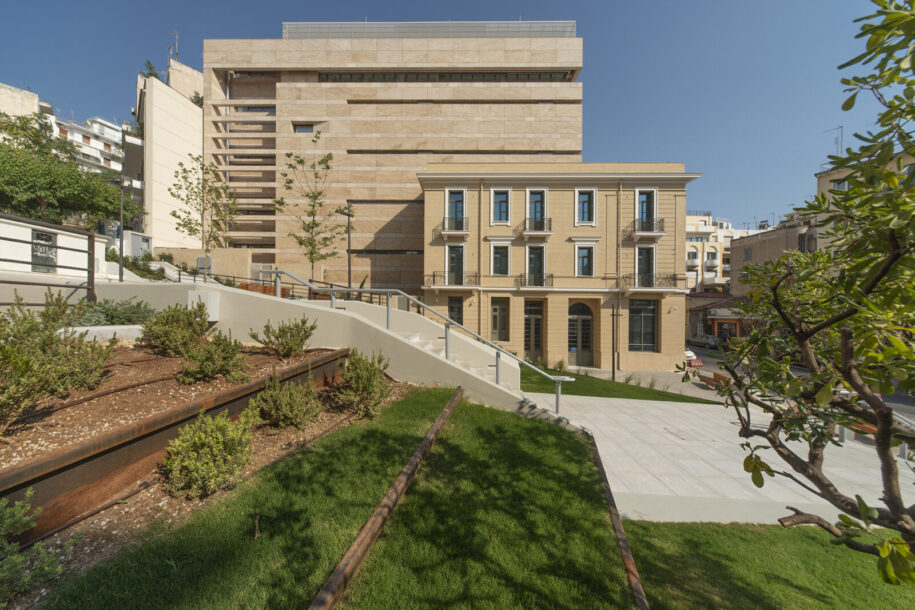
Summer house in Salamis island, Greece by AREA Architecture Research Athens | Photography ©AREA
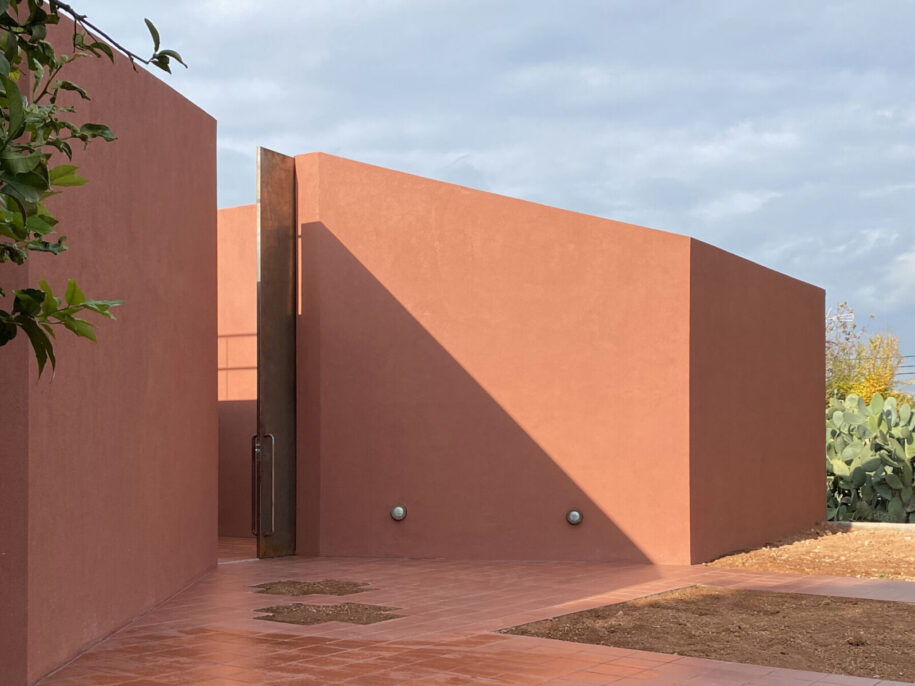
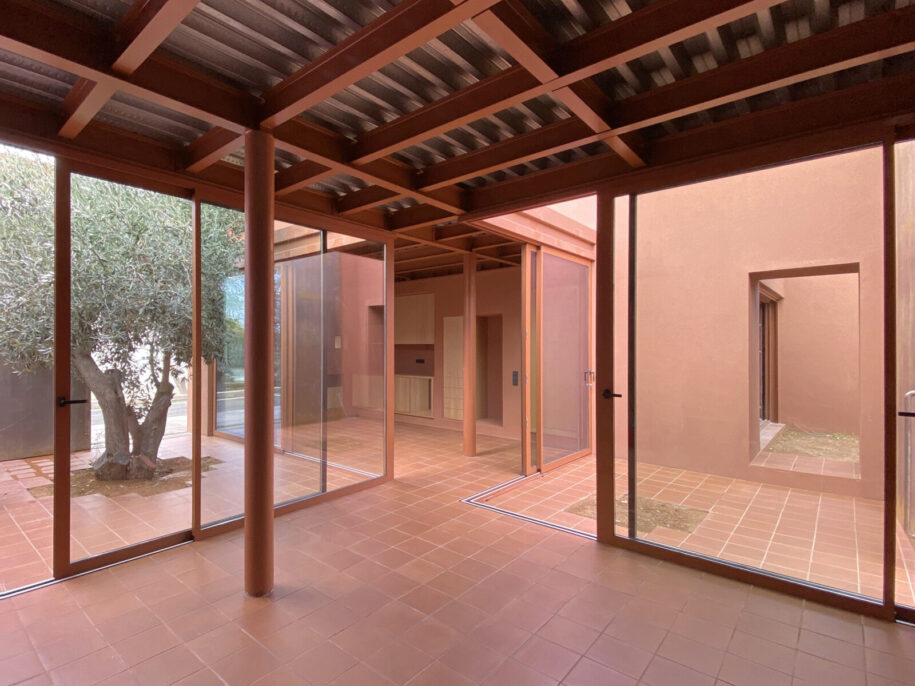
Lap Pool House in Tinos island, Greece by ARISTIDES DALLAS ARCHITECTS | Photography ©Panagiotis Voumvakis
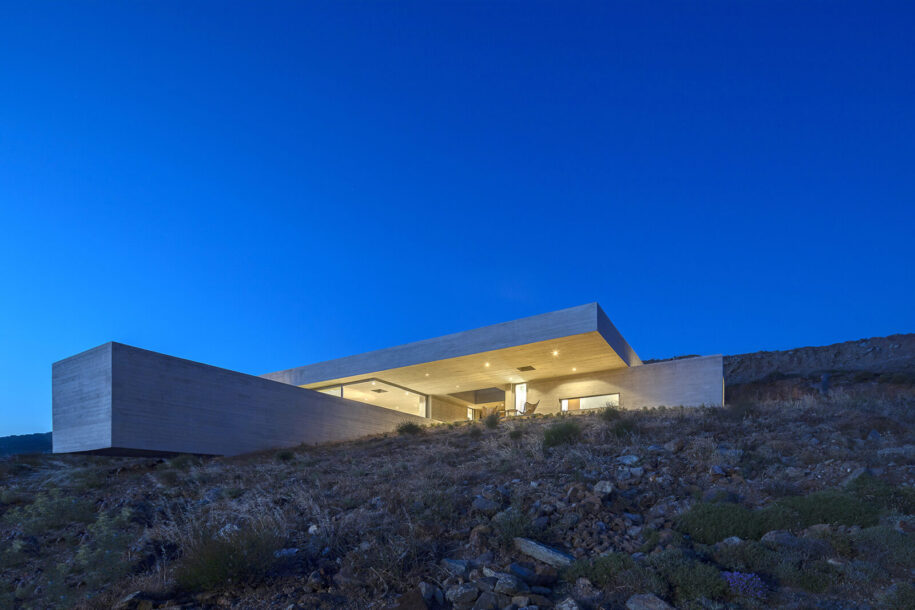
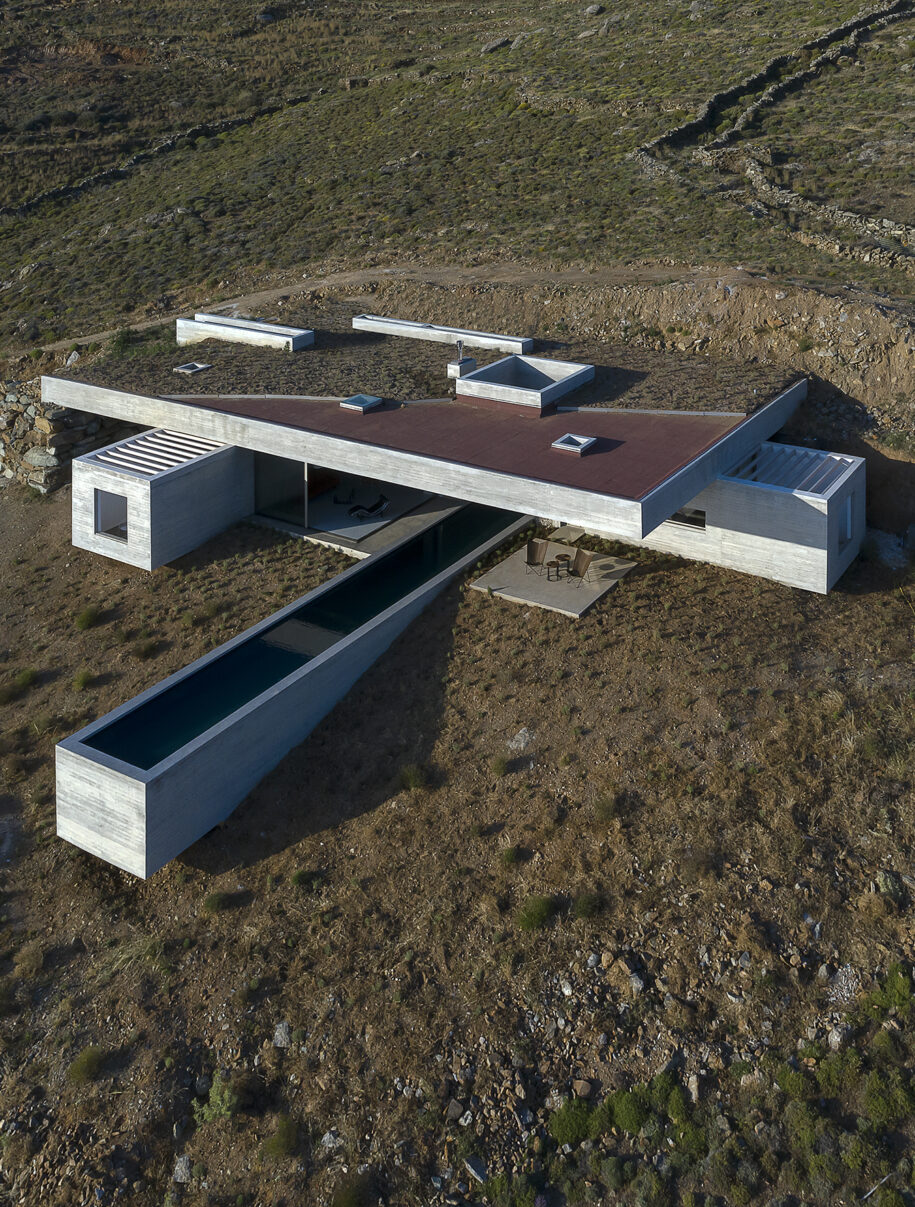
H77 The Diamond House in Voula, Athens, Greece by 314 Architecture Studio | Photography ©Panagiotis Voumvakis
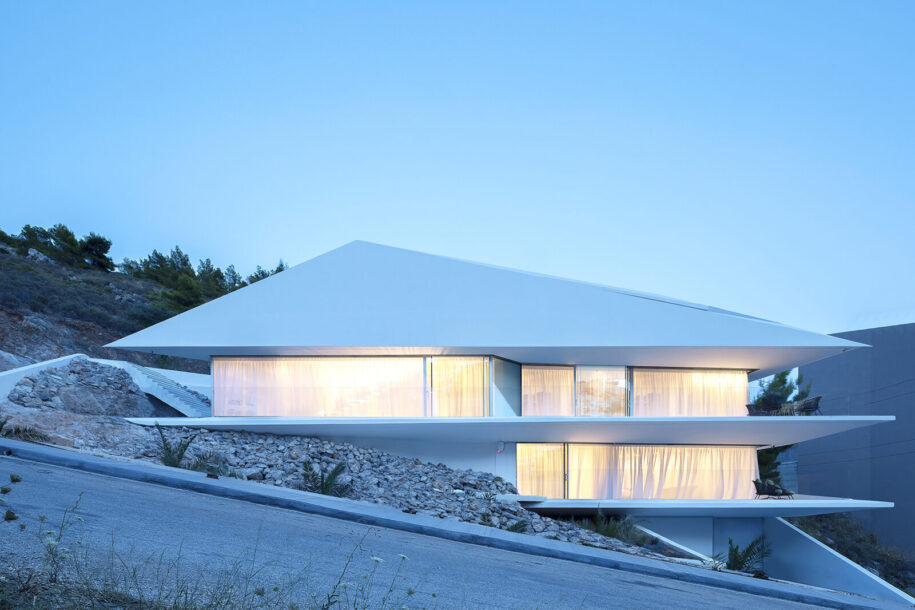
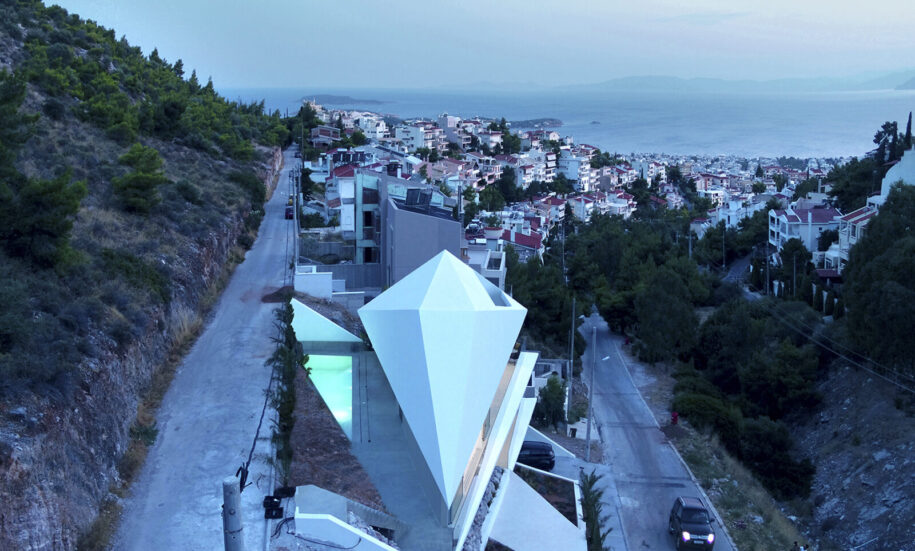
Check the updated map of Contemporary European Architecture
EU Mies Award 2022 customised map: discover the works of the EU Mies Award 2022 using the map that allows you to activate the layers you wish!
You will find all the cities participating in this edition, together with the offices, experts, institutions, works by country and paths between architects and the works that they have built.
- Download the #eumiesaward22 customised map: Map 2022
- Open it with Adobe Acrobat Reader
- Click on the left side “layer” button
- Click on “Map of Europe 2022 online” and activate the layers you want.
- Share your experience with us via #eumiesaward
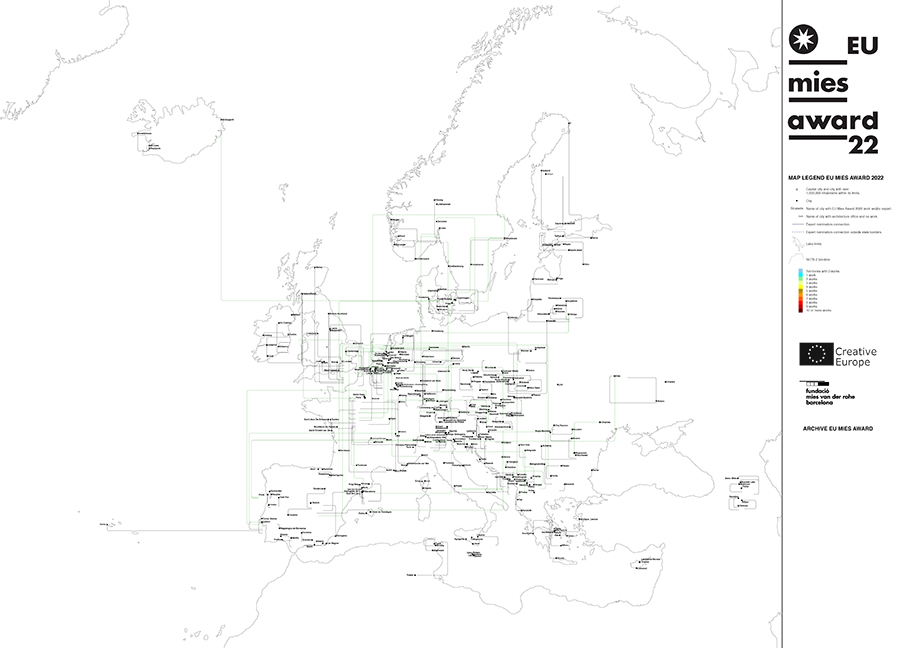
Housing beats culture
For the first time since 2003, single houses (18,10%) has become the largest group of works, followed by collective housing (14,87%) and education facilities (14,01%), surpassing buildings with specific cultural programs. Cultural facilities such as museums, theatres, galleries and congress centres represent an 11,64% of all works. This could be the result of the latest winners and finalists – Kleiburg in Amsterdam, Bordeaux Grand Parc, Navez 5 in Brussels, Ely Court in London and the Lobe Block in Berlin – which have highlighted the importance of good living conditions connected to the quality of design; but also of the current pandemic situation which has raised awareness on the quality of where we live and how people actually live, after staying at home for long periods of time; and the public debate, including with EU policy-makers, on the housing crisis, in which the EU Mies Award participated through talks, exhibitions and projects with UN-HABITAT such as Urban Maestro.
Collective housing buildings are particularly outstanding in cities such as Barcelona (6), Paris (4) and Riga (3). For a very long time, the most prominent examples of collective housing quality came from public-funded constructions, so it is significant that on this occasion, 75% of the collective housing projects have been privately funded.
This important change in trend is mirrored by the fact that buildings for cultural facilities have decreased 6% (single houses have increased the same percentage). This could be the result of understanding cultural facilities in other ways such as being connected to other programs and finding ways to ensure maintenance costs with different strategies. The figure is substantial and will need to be analysed.
Regeneration keeps advancing
A quarter of the total number of nominees have to do with regeneration, understood in its broadest sense and including transformations, restorations, rehabilitations, extensions and adaptive reuse.
In Ireland, the percentage rises to 62% and in places such as Belgium, half the works tackle with the transformation of what already exists, creating mostly cultural and educational buildings but also changing office buildings into housing. The same situation can be found in the Czech Republic and Denmark where 5 of the 7 works from Copenhagen are the result of transformations while in Brussels, 3 of the 5 works are regenerations.
The highest number of transformed existing constructions have become cultural buildings (31), followed by Education (18) and Urban Regeneration (13). It is worth highlighting that
Single Houses are also the result of transforming existing buildings and 11 of them can be found in the list of nominees while 11 Collective Housing buildings have also been the result of transformations.
Export and Import
There has been an increase of transnational works (10%), in which architects from one country have built in another one or the works have been collaborations between architecture offices, teaming up with local partners. This represents a similar percentage than in 2017, a percentage that has been pretty constant since 2009, with 35-45 cross-border works.
The Netherlands is the country that exports most architecture with 8 works in which architects have built in other territories (Casanova+Hernandez Architecten in Albania; Neutelings & Riedijk Architects, Atelier Kempe Thill architects and planners and Korteknie Stuhlmacher Architecten in Belgium; KAAN Architecten in France; MVRDV and O.M.A. in Germany; O.M.A. in Sweden).
France comes in second with 5 works (Dietmar Feichtinger Architectes in Austria; LIST and NP2F in Belgium; Thomas Raynaud Architectes + Paul Devarrieux architecte in Spain; and InSitu in Ukraine) together withDenmark also with 5 works (BIG in France, Norway and Sweden; Andersen & Sigurdsson Arkitekter in Iceland; C.F. Møller Architects in The Netherlands).
The countries in which most foreign offices have built have been Belgium with 7, France with 6, Germany with 6, and Austria with 4. All these works in France and Belgium have been the result of different types of competitions (international, European, public, private, restricted and open), while 4 of the 6 German ones and 3 of the 4 Austrian ones have also been the result of competitions, two of them from private promoters.
BIG Bjarke Ingels Group (Copenhagen) is the studio with the highest number of nominated works (4), with one of them in Copenhagen (DK) and the other three in Bordeaux (FR), Jevnaker (NO) and Stockholm (SW). It is followed by COBE (Copenhagen) which has works in Copenhagen, Køge and Fredericia, all in Denmark; DO Architects (Vilnius) has works in Vilnius and Klaipėda, all in Lithuania; Grafton Architects (Dublin) have built in Toulouse, Paris and London; and Helen & Hard (Oslo and Stavanger) have two works in Stavanger and one in Oslo, all in Norway.
Metropolis versus Rural
These 449 works are distributed in 279 locations with a total population that corresponds to 30% of the total population of the participating countries in the EU Mies Award 2022.
12% of the works have been built in large metropolitan areas with more than 3 million inhabitants. 46% of the works are in cities with a population between 100.000 and 3 million inhabitants and 37% of them are in cities and towns with 1.000 to 100.000 inhabitants. 4% of the works are in villages with less than 1.000 inhabitants, and 1% of the works are isolated.
The most populated location is London (UK), where there are 3 works. The smallest village is Hribljane (SI) which has 8 inhabitants living next to the springs that splatter the hill.
It is also worth mentioning that 15% of the works are in the densest cities with over 5.000 2 inhabitants/km .
From North to South and East to West
The northernmost work is the Visitor Center in Bakkagerði, Iceland, by Andersen & Sigurdsson Arkitekter from Frederiksberg, Copenhagen, Denmark.
The southernmost work is the Pal-maison in Tozeur (TN) by ï+ï. The 40.000-city is a large oasis well known for its architecture of brownish brickwork and geometric patterns and also because it was a filming location for the Star Wars saga. Tunisia joined the Creative Europe programme of the European Union in 2017 and it is the first time that it participates in the EU Mies Award.
The eastern-most works are the Hover Hotel by pnstudio. and the Central School by Storaket Architectural Studio in Dilijan (AM). Armenia joined the Creative Europe programme in 2018 and it is also the first time that it participates in the Prize. The 17.000-inhabitant-town is well known for its spas and is currently the fastest-growing urban settlement in the country.
The western-most work is in Horta (PT), on the island of Faial of the Azores Islands. The City Seafront Requalification by Extrastudio, Oficina dos jardins and SPI has changed the life of the 15.000-inhabitant-town and its connection to the ocean where whales and dolphins can be observed.
Calendar
February 2021: announcement of the works nominated in the first phase of the EU Mies Award 2022
September 2021: announcement of the works nominated in the second phase of the EU Mies Award 2022
January 2022: announcement of the Shortlisted works
February 2022: announcement of the 5 finalist works
April 2022: announcement of the Winners
May 2022: EU Mies Award Day with conferences, debates and the Awards ceremony in the Barcelona Mies van der Rohe Pavilion, opening of the travelling exhibition, presentation of the publication and Open days for the selected works around Europe.
Mark these dates in your calendar to keep track of them and share the whole process!
#EUMiesAward2022
READ ALSO: The Olive Houses in the Tramuntana Mountains of Mallorca, Spain | mar plus ask